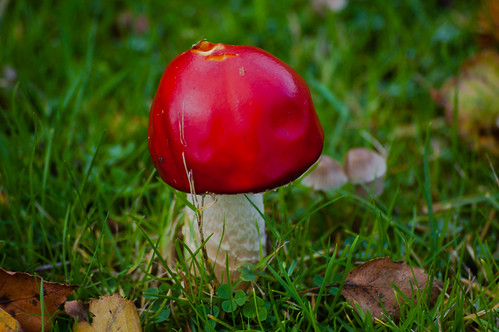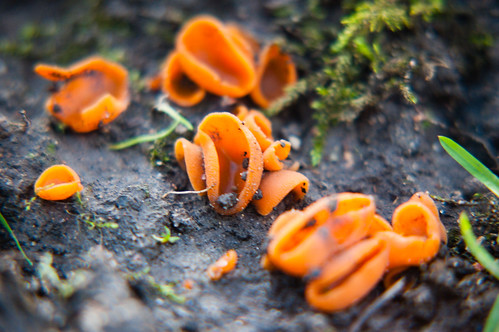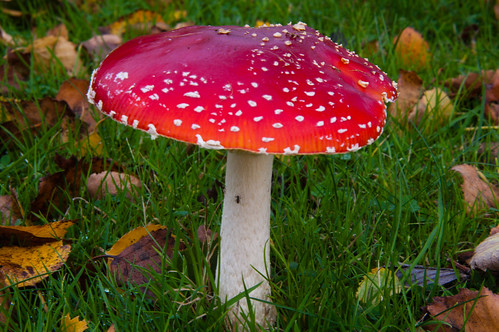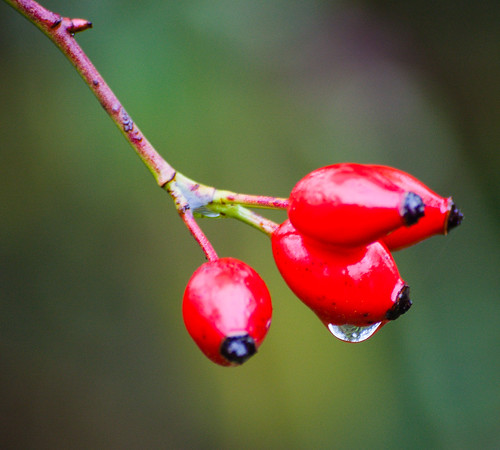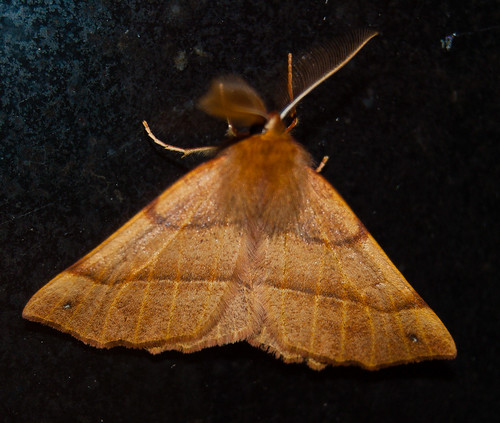The white flecks or warts on the cap of this toadstool are the remnants of a veil which surrounds the mushroom as it pushes up through the soil.
Rain will wash them off, leaving a pure red cap, as here. The yellow marking near the apex is where something has begun to nibble at the fungus.
Further rain, especially heavy rain, will also begin to leach away the bright red colour, leaving oranges or yellows. Such can be seen in this rather bedraggled specimen.
